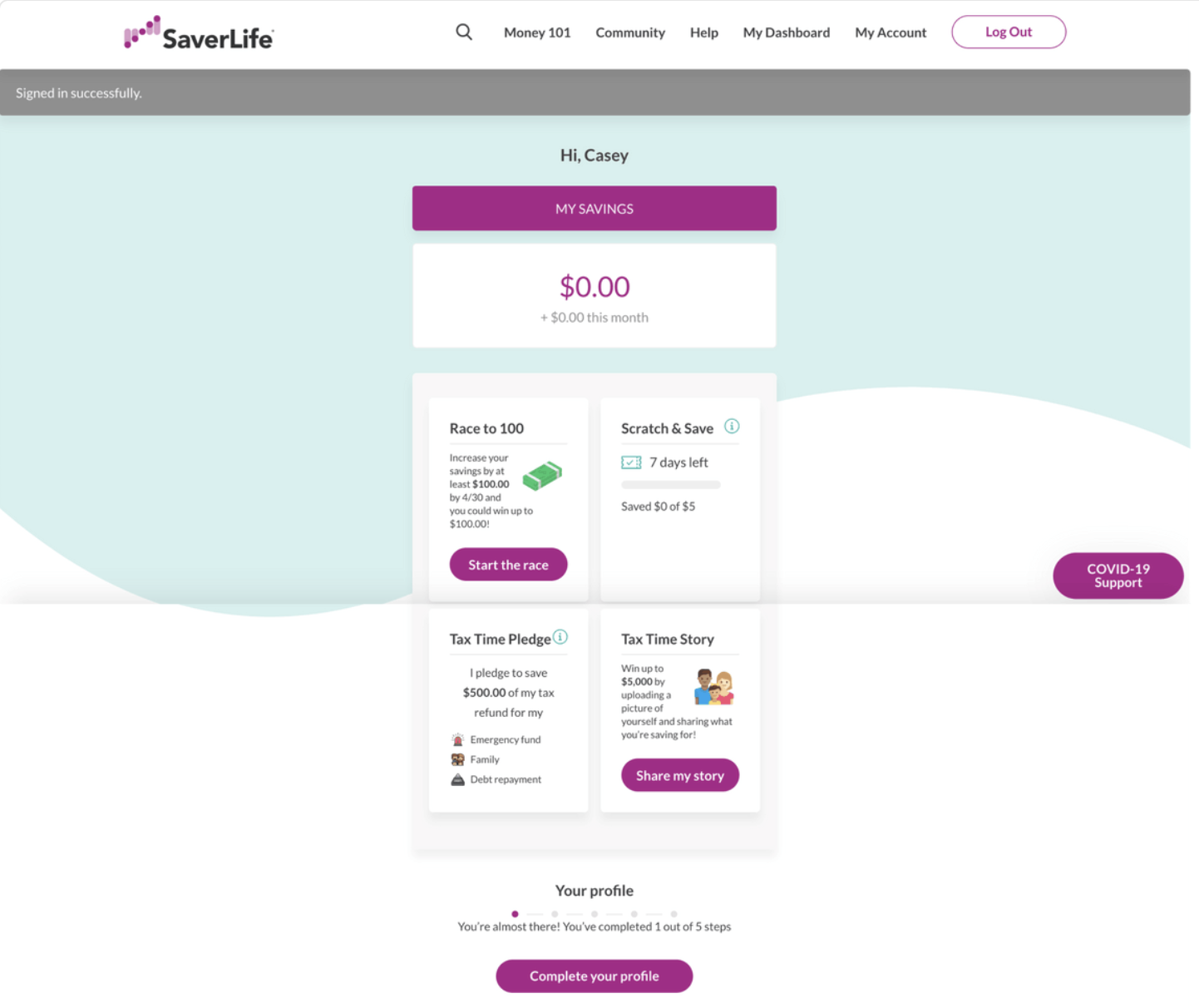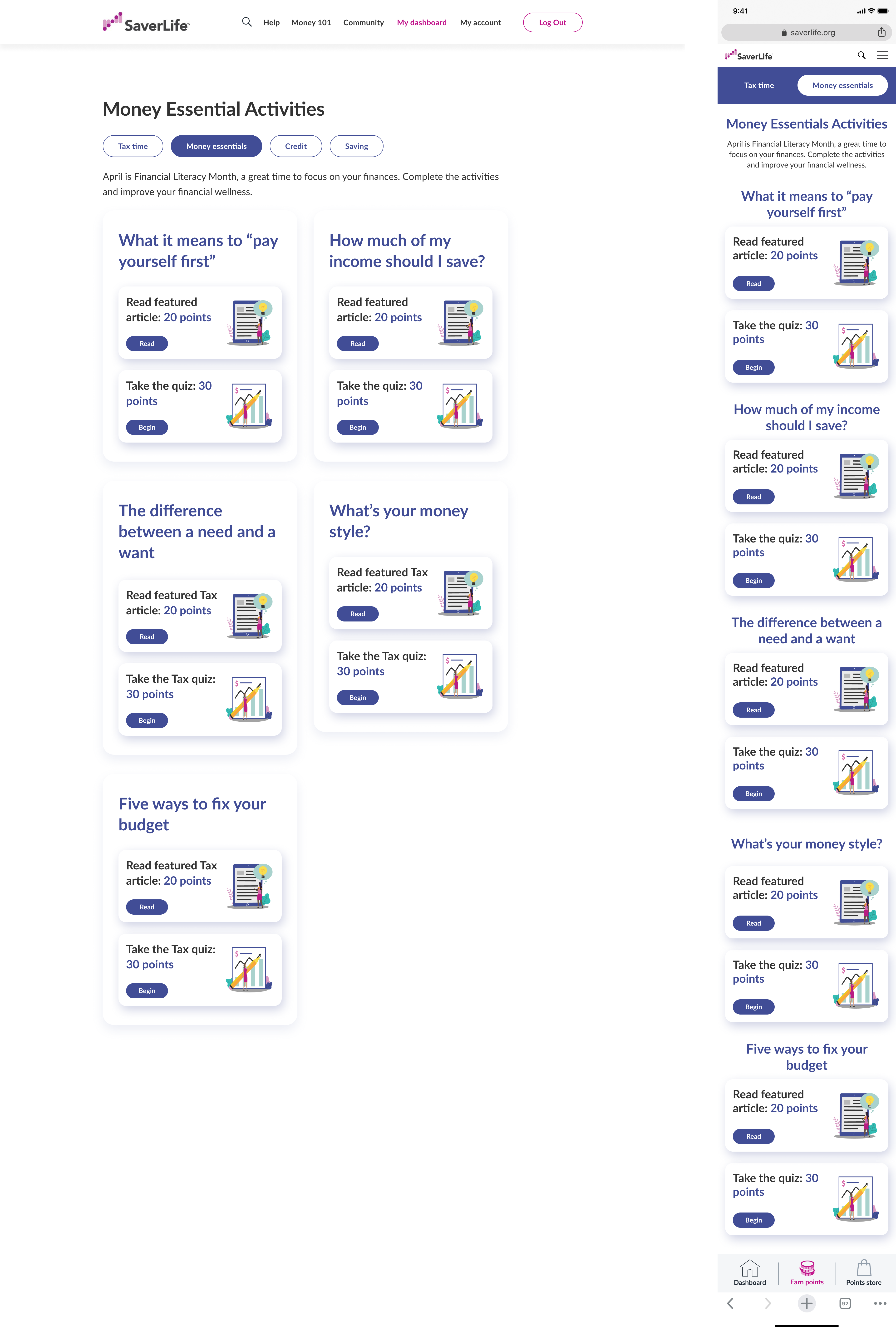Before
Scattered Features, No Habit Formed
What members experienced:
- Members saw SaverLife as a "lottery" not a savings tool
- Dashboard only showed sweepstakes challenges
- Majority of users never discovered the points system
- Gamification features hidden in hamburger menu
- No clear connection between actions and savings progress


RETENTION PATTERN
Engagement spiked during sweepstakes promotions, but remained flat retention between events. This meant there was no habit formation loop.
After
Cultivating a Desire to Save
What we changed:
- Improved navigation and visuals of the dashboard
- Better highlighted core features
- Introduced points store and point activities
- Leveraged gamification to form habits = Created weekly engagement loops


KEY OUTCOME
2x Retention YOY and 2.5x weekly active users
This meant we established savings habits for a larger number of members than ever before.
This meant we established savings habits for a larger number of members than ever before.





















